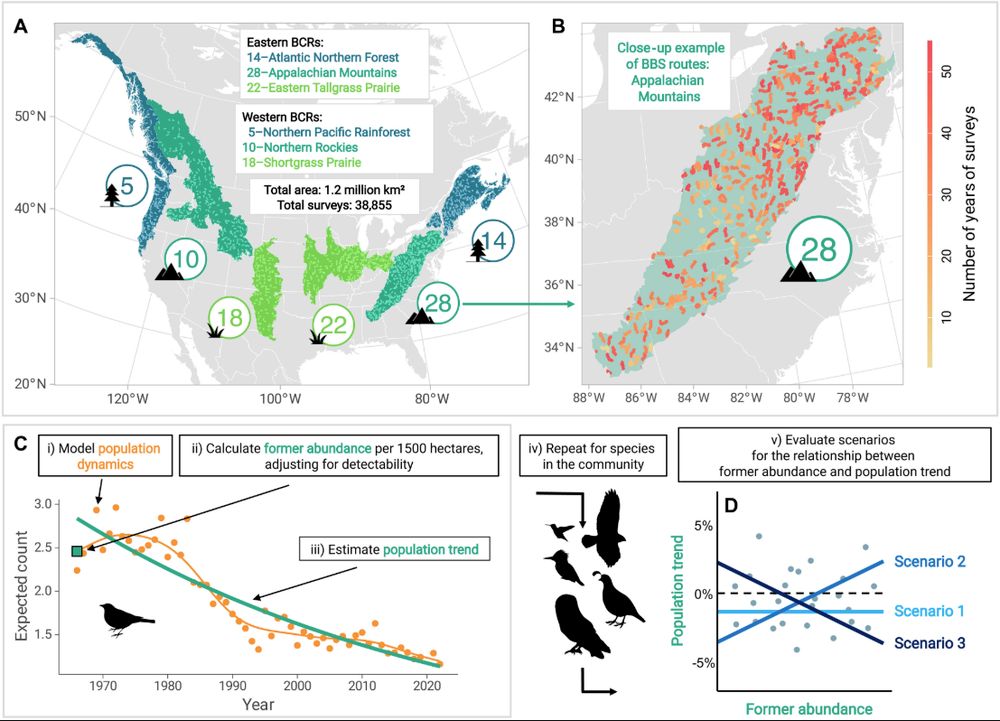
Reposted by: Richard D. Gregory
Reposted by: Richard D. Gregory, Eleanor Robson
👩🎨 Katie is a really talented local printmaker who uses innovative techniques and inks to highlight Fenland wildlife. All printed on sustainable materials in compostable packaging too!




Reposted by: Richard D. Gregory
The long, pointy feathers on some owls' heads are neither horns not ears, but specialised feathers called plumicorns. Their function is not yet fully understood but could help with camouflage
#ScienceFactFriday

Reposted by: Richard D. Gregory
Read the paper here 👉 onlinelibrary.wiley.com/doi/10.1111/... #seabirds #ornithology

Reposted by: Richard D. Gregory
Effect of a previous high pathogenicity avian influenza (HPAIV) infection on the breeding success of Northern Gannets (Morus bassanus) | onlinelibrary.wiley....
Sue Lewis et al | #ornithology 🪶

Reposted by: Richard D. Gregory, Stephen D. Murphy

Reposted by: Richard D. Gregory
RSPB prof: "rapid nosedive.. no research for period to hand yet.. can only speculate.. is it land use/farming practice changes or is it additional emerging climate change factors, just don't know at this stage"
🤔

The web of life is unravelling fast

Reposted by: Richard D. Gregory
Reposted by: Richard D. Gregory
Reposted by: Richard D. Gregory
www.gov.uk/government/s...
These data are made possible by the dedication of expert volunteers, allowing us to track common bird populations for >50 years

Reposted by: Richard D. Gregory, Rob Marchant
Sadly, the ‘all bird species’ index, comprising the population trends of 130 species, has been in a slow continuous decline in the UK since the 1970s, down by 18% and by 4% in the last five years. 📉 #Ornithology

Reposted by: Richard D. Gregory, Patrick A. Jansen, Mark Walters

Reposted by: Richard D. Gregory

The Society for Conservation Biology conbio.onlinelibrary.wiley.com/doi/10.1111/...
@rspbscience.bsky.social
Reposted by: Richard D. Gregory
Wetland location and captive breeding influence trans-Mediterranean movements in the endangered Marbled Duck (Marmaronetta angustirostris) | onlinelibrary.wiley....
Irene Pacheco-Guardiola et al | #ornithology 🪶

Reposted by: Richard D. Gregory
www.oecd.org/en/publicati...
Reposted by: Richard D. Gregory
#BiodiversityAction #IAS #PredatorFree2050 #EndangeredSpecies
www.npr.org/2025/09/08/n...

Reposted by: Richard D. Gregory
Does the world need a new credit market place or are we all being conned? 🌍
dialogue.earth/en/nature/th...

Reposted by: Richard D. Gregory, Julie Leask
www.biorxiv.org/content/10.1...


UK target to protect 30% of land & sea for nature by 2030. But just ~6% of land across the UK is properly protected with just 5 years to go...."
Here's how to fix this:
www.wcl.org.uk/assets/uploa...
@rspb.bsky.social @rspbscience.bsky.social
Reposted by: Richard D. Gregory



